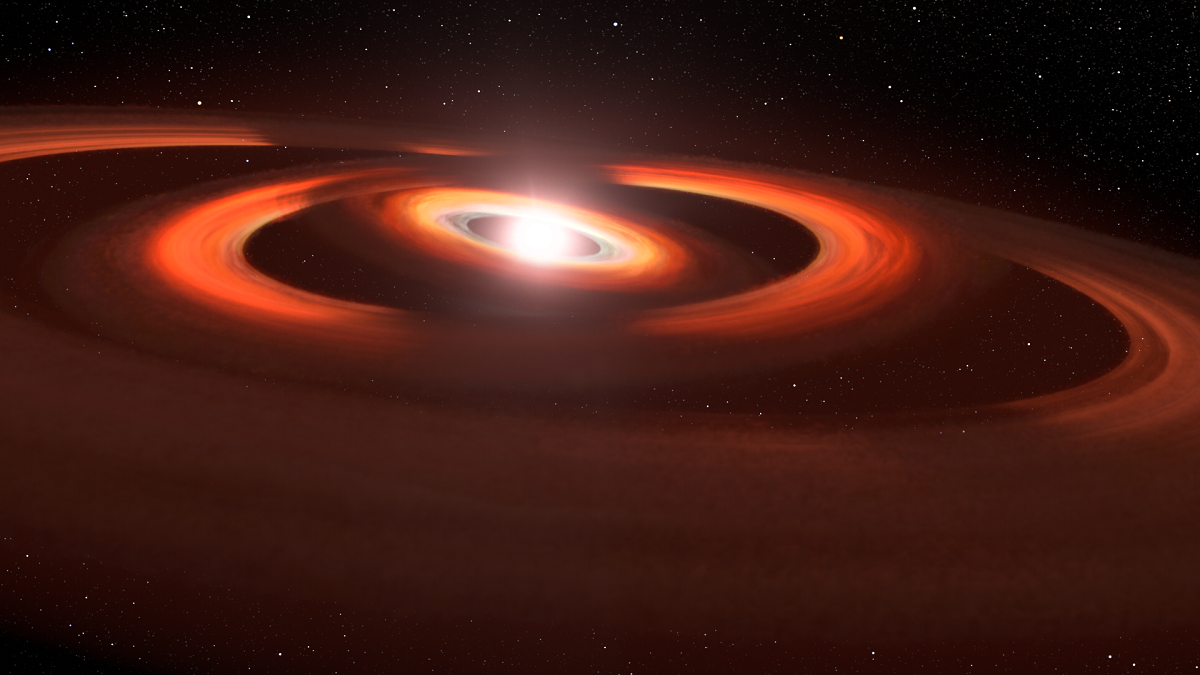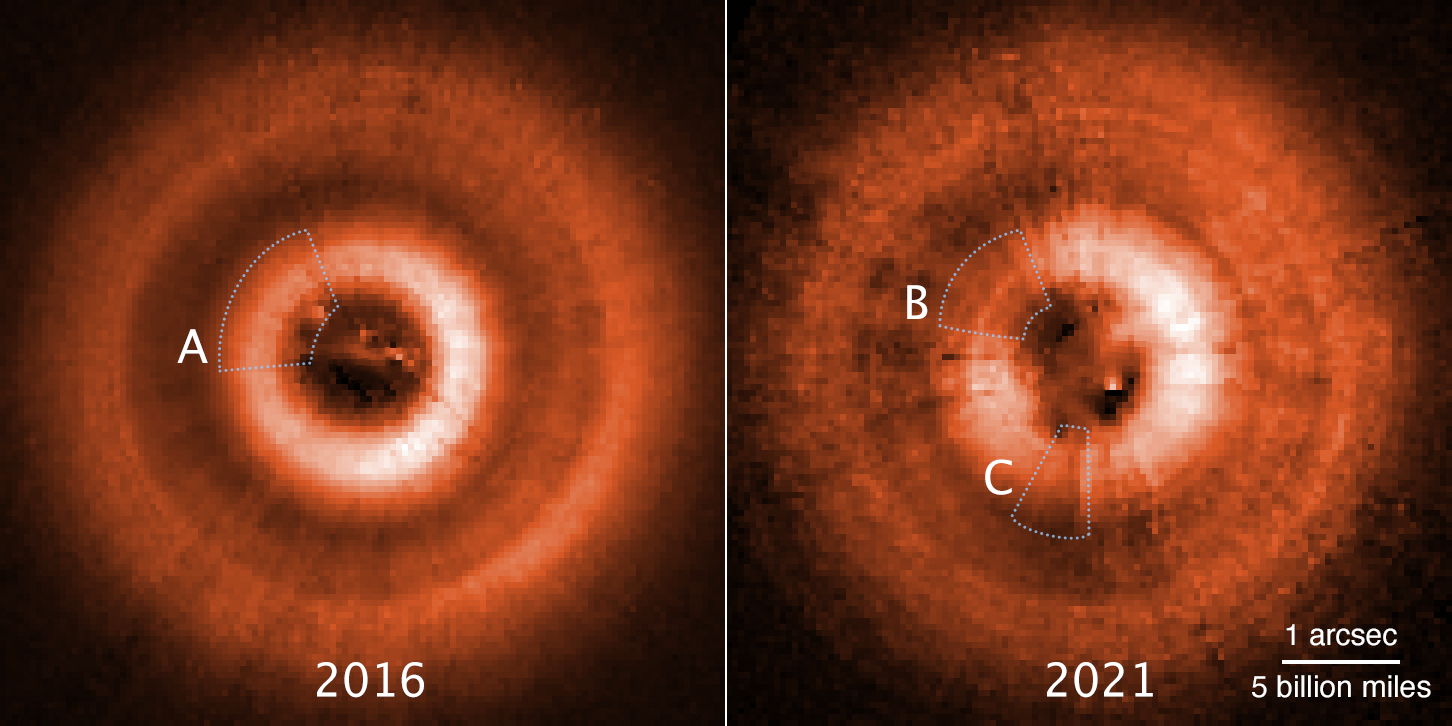The Hubble telescope has shown the beginnings of planets in a star system that resembles the Solar System

Scientists analysed images taken in 2016 and 2021 and concluded that new planets are budding in a star system not far from us. The images were taken by the Hubble orbiting telescope.
Here's What We Know
The event takes place in the constellation Hydra, which is 196 light years away from our solar system. The planets are formed from the dust and gas that surround the star called TW Hydrae.
According to John Debes, a European Space Agency (ESA) specialist, the two shadows that orbit the star are two invisible planets. They collect dust in their orbits, and the difference is noticeable after a few years.

The observed system is similar to the Solar System. TW Hydrae is 50 times younger and 20% lighter than the Sun, but has an 11% larger radius. The star system is tilted 90 degrees towards our planet, so scientists can observe the cluster of matter around the star.
According to astronomers, the two planets are the same distance from TW Hydrae as Jupiter is from the Sun. In addition, their disks are tilted by 5 to 7 degrees, which corresponds to the "typical architecture" of the solar system.
Source: NASA